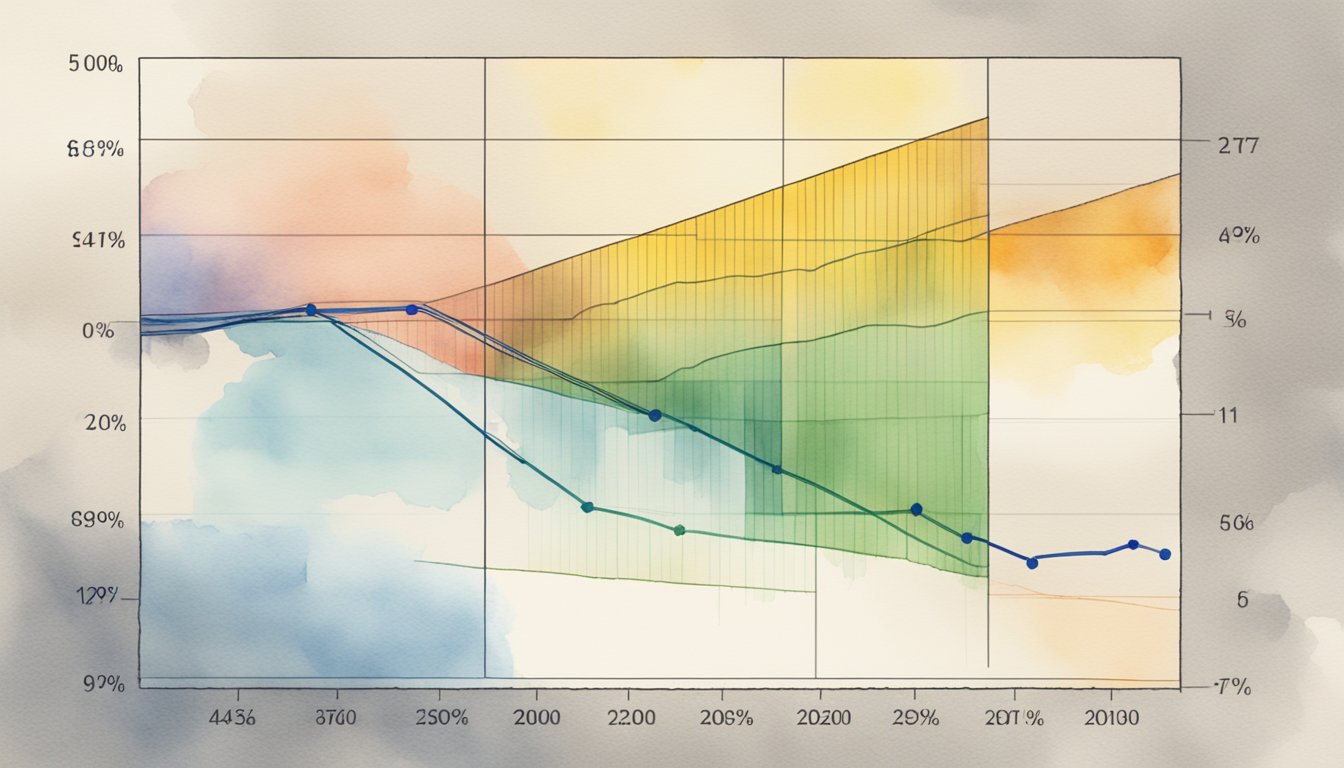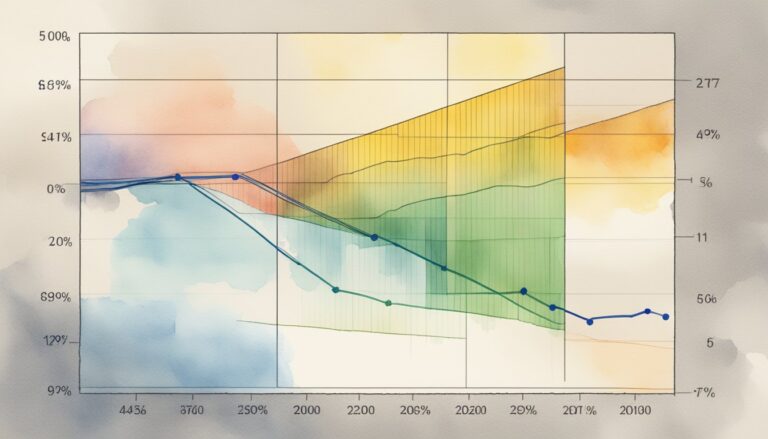What Does Loss Ratio Mean?
The loss ratio measures the percentage of insurance premiums used to pay claims and expenses.
It’s a key indicator of an insurance company’s operational efficiency.
To calculate the loss ratio, you use this formula:
Loss Ratio = (Insurance Claims Paid + Loss Adjustment Expense) / Premiums Earned
This ratio helps you understand how well an insurer manages its premiums compared to the payouts made.
Components of the Loss Ratio:
-
Insurance Claims Paid: This is the total amount paid by the insurer to policyholders for their claims.
-
Loss Adjustment Expense: The costs incurred to investigate and verify claims.
-
Premiums Earned: The total premiums collected by the insurance company during the period.
A lower loss ratio means the insurer is more successful in managing its risks and expenses.
On the other hand, a high loss ratio indicates large sums paid out in claims, which could affect the insurer’s profitability.
Comparing Metrics:
Comparing the loss ratio to the expense ratio, which measures other operating expenses as a percentage of premiums, can give you more insights into the insurer’s financial health.
For a balanced view, insurers often monitor both ratios to ensure they maintain acceptable loss mirrors.
This simple yet powerful metric provides a quick snapshot of an insurer’s performance, helping you make informed decisions or assessments regarding their operations.
Examples of Loss Ratio in Practice
In the insurance industry, the loss ratio is a key metric for measuring financial performance.
Personal Auto Insurance: Suppose an auto insurance company collects $1,000,000 in premiums.
If they pay out $650,000 in claims and $50,000 in loss adjustment expenses, the loss ratio is calculated as:
[
text{Loss Ratio} = frac{650,000 + 50,000}{1,000,000} times 100 = 70%
]
Health Insurance: For a health insurance firm, the medical loss ratio measures the percentage of premiums used for claims and healthcare quality improvements.
If an insurer collects $10,000,000 in premiums and spends $8,000,000 on medical claims, the medical loss ratio is:
[
text{Medical Loss Ratio} = frac{8,000,000}{10,000,000} times 100 = 80%
]
Commercial Property Insurance: In commercial property insurance, evaluating the company’s loss ratio helps determine its risk profiles.
For instance, a company may have earned $5,000,000 in premiums and incurred $2,500,000 in claims payments plus $500,000 in loss adjustment expenses.
The loss ratio would be:
[
text{Loss Ratio} = frac{2,500,000 + 500,000}{5,000,000} times 100 = 60%
]
Casualty Insurance: If a casualty insurance provider collects $3,000,000 in premiums and pays out $1,800,000 in claims, the loss ratio is:
[
text{Loss Ratio} = frac{1,800,000}{3,000,000} times 100 = 60%
]
Performance Monitoring: Insurance companies also look at the combined ratio, which includes the loss ratio and the expense ratio.
If a company has a loss ratio of 60% and an expense ratio of 30%, the combined ratio would be:
[
text{Combined Ratio} = 60% + 30% = 90%
]
Tracking and analyzing your loss ratio helps evaluate profitability and improves pricing strategies in the insurance business.
To deeply understand the role of claims in loss ratios, refer to the claim definition.
For insights into claims management, read about a claims adjuster.
Related Terms

Insurance Claims: These are requests made by the policyholder to the insurance company for payment based on the terms of the policy.
Claims often follow events like accidents or natural disasters.
Underwriting: This is the process by which insurers evaluate the risk of insuring a client.
It helps in determining the premium and coverage details.
More details on underwriting can be found here.
Medical Loss Ratio: Specifically relevant for health insurers, this ratio measures the percentage of premiums spent on medical claims and quality improvement versus overhead costs.
The Affordable Care Act (ACA) requires a minimum medical loss ratio of 80-85%.
Adjustment Expenses: These are costs incurred by the insurance company to investigate and settle insurance claims.
It adds to the total expenses and impacts the loss ratio.
Insurance Companies: They are entities that provide various insurance products to clients.
Their financial performance and stability depend on balancing earned premiums with paid claims and expenses.
Casualty Insurance: This type of coverage protects against loss or damage to property and liability for legal damages.
It’s vital for understanding the various categories of insurance.
Affordable Care Act (ACA): This law impacts health insurers by setting regulations such as the medical loss ratio.
It ensures that a significant portion of premiums is used for clients’ care.
Premiums: These are regular payments made by the policyholders to the insurance company in exchange for coverage.
Learn more about premiums here.
Revenue and Margin: Insurance companies generate revenue through collected premiums.
Their margin is the difference between earned premiums and the costs of claims plus overhead.
Tables could highlight key aspects of these terms:
| Term | Definition |
|---|---|
| Insurance Claims | Requests for payment based on policy terms |
| Underwriting | Risk evaluation process |
| Medical Loss Ratio | Percent of premiums used for medical claims and quality costs |
| Adjustment Expenses | Costs related to claims investigation and settlement |
| Casualty Insurance | Coverage for property loss/damage and legal liability |
| ACA | Law affecting health insurers and setting regulations |
| Premiums | Regular payments for coverage |
| Revenue | Income from collected premiums |
| Margin | Difference between revenue and costs |
Frequently Asked Questions

In insurance, understanding loss ratios is crucial for evaluating financial health and operational efficiency.
Below, we address common queries related to loss ratios in various insurance contexts.
What constitutes a good loss ratio in the context of insurance?
A good loss ratio varies across different types of insurance.
For example, in health insurance, a favorable loss ratio indicates that a significant portion of premiums goes toward medical care.
How is the loss ratio calculated in insurance environments?
The loss ratio is calculated by dividing the total claims paid by the total premiums earned.
This ratio helps determine the percentage of premiums used to pay claims.
Can you explain the difference between loss ratio and combined ratio?
The loss ratio measures only the claims expense against premiums.
The combined ratio includes both claims and operational expenses, offering a comprehensive view of an insurer’s profitability.
What is the distinction between net loss ratio and gross loss ratio?
The net loss ratio considers the effect of reinsurance and other recoveries on claims payments.
The gross loss ratio calculates claims paid divided by earned premiums without accounting for reinsurance.
How does the loss ratio in medical insurance differ from general insurance?
In medical insurance, the Medical Loss Ratio demands that a specific percentage of premiums be spent on clinical services and quality improvements.
In general insurance, loss ratio standards can vary based on the type and structure of the policy.
In what ways does the claims ratio relate to the loss ratio in insurance metrics?
The claims ratio is another term for loss ratio.
It evaluates the percentage of premiums used for paying claims, thereby aiding insurers in assessing operational effectiveness.






